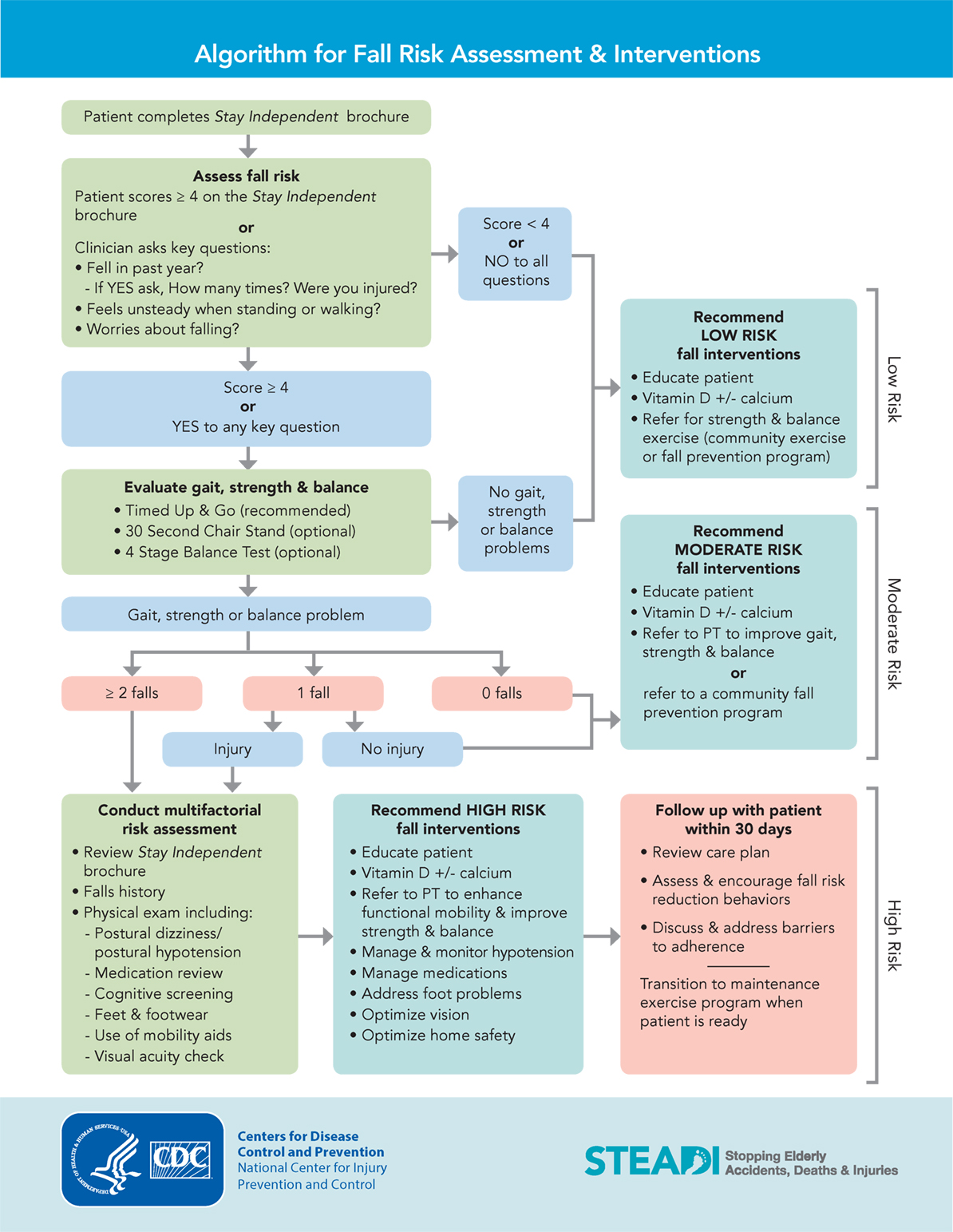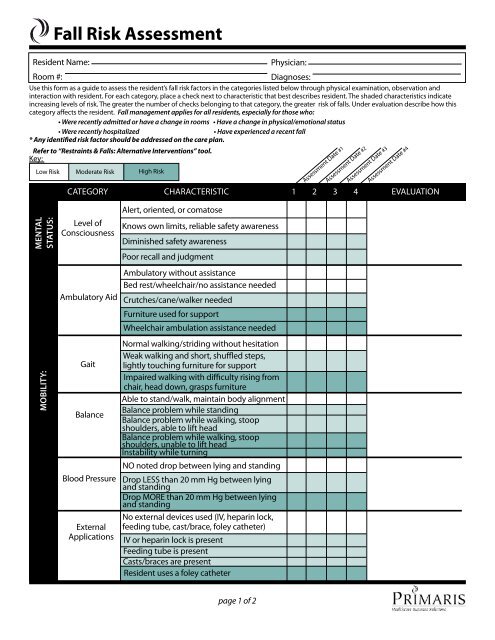Little Known Questions About Dementia Fall Risk.
Table of ContentsThe Single Strategy To Use For Dementia Fall RiskThe Buzz on Dementia Fall RiskThe 8-Minute Rule for Dementia Fall RiskExcitement About Dementia Fall Risk
An autumn risk assessment checks to see just how most likely it is that you will certainly fall. It is primarily provided for older adults. The assessment generally consists of: This consists of a series of inquiries concerning your general wellness and if you've had previous falls or troubles with balance, standing, and/or strolling. These devices test your stamina, equilibrium, and stride (the way you walk).STEADI includes screening, assessing, and treatment. Treatments are recommendations that may lower your danger of dropping. STEADI includes 3 steps: you for your risk of succumbing to your risk variables that can be enhanced to try to avoid drops (for example, equilibrium problems, impaired vision) to reduce your threat of falling by using reliable approaches (as an example, giving education and sources), you may be asked numerous concerns consisting of: Have you dropped in the previous year? Do you feel unsteady when standing or strolling? Are you stressed regarding dropping?, your supplier will certainly test your strength, balance, and stride, making use of the complying with fall assessment devices: This examination checks your gait.
If it takes you 12 seconds or more, it may mean you are at greater threat for an autumn. This test checks stamina and equilibrium.
The settings will certainly get tougher as you go. Stand with your feet side-by-side. Move one foot midway ahead, so the instep is touching the big toe of your other foot. Relocate one foot totally in front of the various other, so the toes are touching the heel of your various other foot.
Dementia Fall Risk for Beginners
Many falls happen as an outcome of several contributing elements; therefore, handling the threat of dropping starts with identifying the elements that contribute to fall threat - Dementia Fall Risk. Several of one of the most appropriate threat variables include: History of previous fallsChronic medical conditionsAcute illnessImpaired gait and equilibrium, reduced extremity weaknessCognitive impairmentChanges in visionCertain high-risk medications and polypharmacyEnvironmental aspects can also increase the risk for drops, including: Inadequate lightingUneven or damaged flooringWet or unsafe floorsMissing or damaged handrails and order barsDamaged or improperly fitted tools, such as beds, wheelchairs, or walkersImproper usage of assistive devicesInadequate supervision of the individuals residing in the NF, including those who show aggressive behaviorsA effective autumn danger administration program needs have a peek here an extensive clinical evaluation, with input from all members of the interdisciplinary team

The care plan should additionally check my source consist of treatments that are system-based, such as those that promote a secure setting (ideal lighting, hand rails, grab bars, and so on). The effectiveness of the interventions must be reviewed regularly, and the treatment plan revised as necessary to show adjustments in the fall threat assessment. Applying a loss danger monitoring system utilizing evidence-based ideal technique can reduce the occurrence of drops in the NF, while restricting the capacity for fall-related injuries.
Dementia Fall Risk - Truths
The AGS/BGS standard recommends screening all grownups matured 65 years and older for fall risk yearly. This screening includes asking clients whether they have dropped 2 or more times in the past year or sought medical focus for a fall, or, if they have not dropped, whether they really feel unstable when walking.
Individuals that have actually dropped when without injury ought to have their balance and gait like it evaluated; those with gait or balance problems should receive added analysis. A background of 1 autumn without injury and without gait or balance problems does not warrant additional analysis beyond ongoing yearly loss risk testing. Dementia Fall Risk. An autumn danger evaluation is called for as component of the Welcome to Medicare evaluation

The Greatest Guide To Dementia Fall Risk
Recording a drops background is among the high quality indications for fall avoidance and administration. An important component of threat evaluation is a medicine testimonial. A number of classes of medicines enhance autumn danger (Table 2). copyright medications in specific are independent predictors of drops. These medicines have a tendency to be sedating, modify the sensorium, and hinder equilibrium and gait.
Postural hypotension can typically be eased by reducing the dose of blood pressurelowering medications and/or stopping medicines that have orthostatic hypotension as an adverse effects. Use above-the-knee support pipe and copulating the head of the bed elevated may likewise minimize postural reductions in blood pressure. The recommended aspects of a fall-focused checkup are displayed in Box 1.

A Pull time higher than or equivalent to 12 secs recommends high loss risk. Being incapable to stand up from a chair of knee height without using one's arms indicates increased autumn risk.